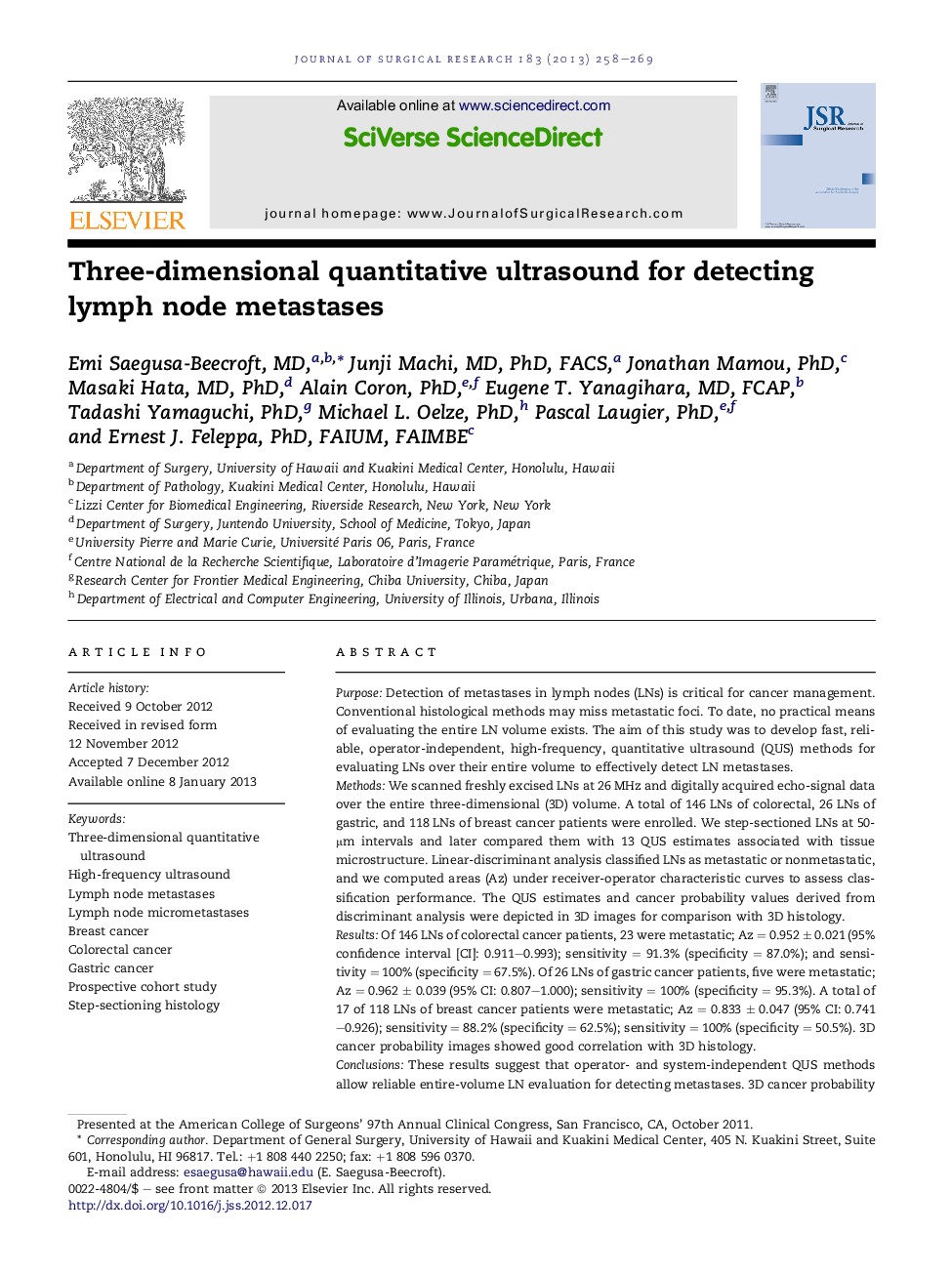| Article ID | Journal | Published Year | Pages | File Type |
|---|---|---|---|---|
| 6254345 | Journal of Surgical Research | 2013 | 12 Pages |
PurposeDetection of metastases in lymph nodes (LNs) is critical for cancer management. Conventional histological methods may miss metastatic foci. To date, no practical means of evaluating the entire LN volume exists. The aim of this study was to develop fast, reliable, operator-independent, high-frequency, quantitative ultrasound (QUS) methods for evaluating LNs over their entire volume to effectively detect LN metastases.MethodsWe scanned freshly excised LNs at 26 MHz and digitally acquired echo-signal data over the entire three-dimensional (3D) volume. A total of 146 LNs of colorectal, 26 LNs of gastric, and 118 LNs of breast cancer patients were enrolled. We step-sectioned LNs at 50-μm intervals and later compared them with 13 QUS estimates associated with tissue microstructure. Linear-discriminant analysis classified LNs as metastatic or nonmetastatic, and we computed areas (Az) under receiver-operator characteristic curves to assess classification performance. The QUS estimates and cancer probability values derived from discriminant analysis were depicted in 3D images for comparison with 3D histology.ResultsOf 146 LNs of colorectal cancer patients, 23 were metastatic; Az = 0.952 ± 0.021 (95% confidence interval [CI]: 0.911-0.993); sensitivity = 91.3% (specificity = 87.0%); and sensitivity = 100% (specificity = 67.5%). Of 26 LNs of gastric cancer patients, five were metastatic; Az = 0.962 ± 0.039 (95% CI: 0.807-1.000); sensitivity = 100% (specificity = 95.3%). A total of 17 of 118 LNs of breast cancer patients were metastatic; Az = 0.833 ± 0.047 (95% CI: 0.741-0.926); sensitivity = 88.2% (specificity = 62.5%); sensitivity = 100% (specificity = 50.5%). 3D cancer probability images showed good correlation with 3D histology.ConclusionsThese results suggest that operator- and system-independent QUS methods allow reliable entire-volume LN evaluation for detecting metastases. 3D cancer probability images can help pathologists identify metastatic foci that could be missed using conventional methods.
